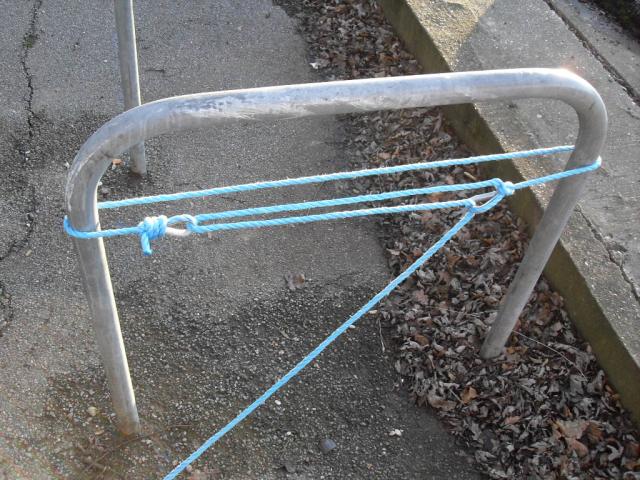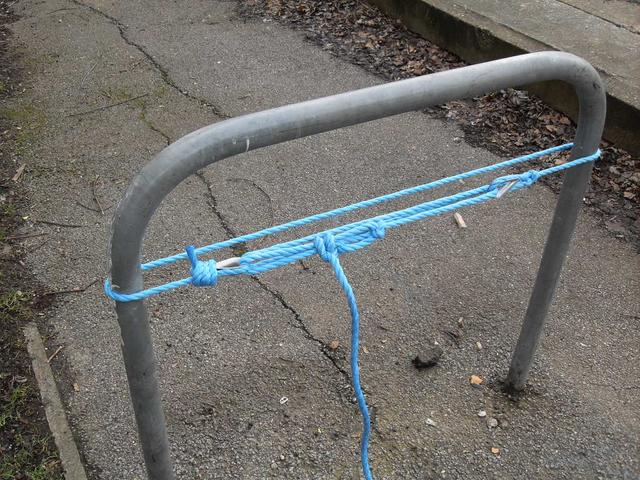
The standard knot from which this variant is derived is the Wagoner's Hitch, also known as - Trucker's Hitch, Haymaker's Hitch, Harvester's Hitch. How to tie the standard knot is shown here: [["Trucker's Hitch"]]
Here is my "Tofino modification of a Wagoner's Hitch" - named after the remote Vancouver Island village on the Pacific coast where I arrived at this knot. These 10mm galvanised steel thimbles were 47Cents each, about 30pence (UK) each, at the marine store. A bit of experimenting with different knots and splices lead to this specification.

The lower end "eye" is formed by gripping a thimble in the loop of a tightly twisted-up Jack Ketch's Knot. The temporary eye is formed by using the standard method of forming the temporary loop, into which a thimble is inserted and the loop drawn up to grip the thimble. The loop grips the thimble more than the tension on the "lead line" tries to pull it out.
The galvanised steel thimbles proved both cheapest and best - the zinc coating offers the lowest friction to polypropylene rope while the steel base is stronger, capably handling line tension and meaning also that a couple of thimbles can be left loose in a toolbox (comparing to nylon thimbles)
A further advantage of the low friction of the rope drawn through the eyes is that this modified Wagoner's Hitch always bites onto the workpiece harder than the pull on the lead-line can rotate the Hitch around the workpiece for even the smoothest slippiest sections (which is a major annoyance when you have only one hand free while working upside down at height!).
Because of the smooth interaction of the rope with the thimbles - low-friction sliding and a reversing radius larger than the rope diameter - the rope does not accumulate abrasion wear typical when a rope is used in a standard wagoner's hitch. It is hoped but remains to be seen whether the "tofino-modified wagoner's hitch" can be used like an improvised block-and-tackle to draw loads over a long distance (the wagoner's hitch is for tying-off only - it's a "hitch"!).
This hitch could be locked off with two half-hitches, as per standard wagoner's hitch, then you could "tornique" the centre of the loop with a bar, obtaining advantage from the higher initial tension.
It can be securely "locked-off" at tension by cascading a second wagoner's hitch in the current lead-line, without a thimble inserted, so that the friction works for you in protecting the lock of the two half-hitches done on that cascade - as shown
